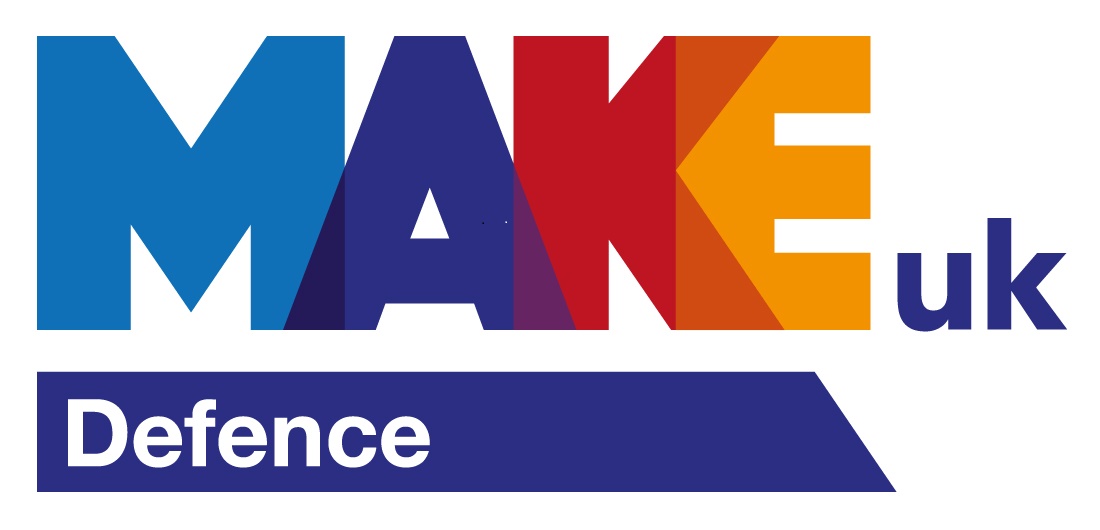What is the best B2B SEO strategy in 2022?
20.09.21


20.09.21

Defence Media’s Digital Director and SEO expert Grant Turnbull outlines what he sees as the key future trends for search engine optimisation and how B2B companies should develop SEO strategies in 2022 and beyond.
If you think that search engine optimisation doesn’t matter for your business and your marketing plans in 2022, then think again. If you’re not investing resources into a B2B SEO strategy, then it’s likely your competitors will, and they will reap the benefits of being at the top of search results while you’re languishing at the bottom.
This is a comprehensive blog, but if you’re pressed for time, feel free to jump to the section you are most interested in:
Despite it being around for decades now, search engine optimisation (SEO) remains one of the most underutilised marketing tools in the B2B marketing and communications toolkit. This is especially the case in the B2B world, and in niche sectors such as manufacturing and engineering. But why?
Firstly, many companies in B2B are still stuck in the old ways of promotion marketing, generating glossy data sheets and printing roller banners that have zero ROI value. They are stuck in this outdated cycle because that’s how they’ve always done it, and nobody in the company really understands digital (let alone what SEO is), and what benefits it can have for a company in today’s highly competitive digital space.

This stock photo businessman is probably confused about SEO and what it can do for his business.
The principal reason for investing business resources into a B2B SEO strategy is simple: to ensure that your company’s web pages are the top results on a search engine when a person uses terms or queries that are relevant to your business and product lines.
There are now over 6.5 billion searches a day on Google, and 15% of those have never been searched before! These searches translate into free organic traffic for a website – that differs from paid, social or direct traffic – and can be crucial in generating awareness for company products and services, and importantly gathering new business leads.
It is also very likely (despite your best marketing efforts) that many people just haven’t heard of your company. This is why SEO is still highly relevant; if Google has placed your company at the top of organic search results for a keyword, there is a high chance that they will click through regardless. In fact, the first organic result on Google has an average click-through rate (CTR) of 28.5%, while the tenth position has a CTR of 2.5%.
Let’s compare this to paid advertisements – including pay-per-click – where CTR can average just 1.9%. That’s a significant difference and you’ve had to pay for worse performance. Is that good ROI?

A comparison of click-through rates (CTR) between organic search and pay-per-click, the difference is significant.
From there, if your webpage satisfies the person’s search intent with relevant content and a good user experience, then that will have a positive impact on your brand and they could explore your website further and reach out for more information with a phone call or form fill.
The one constant of SEO is that it is always changing. There is no magic formula or technical solution that will instantly deliver fantastic search engine results. It requires time, money (if outsourcing or hiring/training internally), skill, and quite a lot of luck thrown in as well.
Why can SEO be so difficult? Firstly let’s take a look at search engines themselves, and more specifically at the most popular search engine, Google.
To sort through the billions of web pages that make up the internet, Google has spent two decades developing ranking systems that present the most relevant and useful information to the searcher, all within a matter of milliseconds.
At the core of this are highly complex search algorithms that take into account hundreds of factors, which are weighted depending on the nature of the query. These factors are not only the words used in your search query, but also content freshness, usability of pages, authority of your domain, the number of high authority pages that link back to your domain (backlinks), and a user’s location.
In recent years, Google has also developed increasingly complex models that better understand synonyms, natural language patterns, and the category of information people are looking for. Understanding natural language is particularly important with the advent of smart devices and how people speak to them to ask questions, rather than type.
According to Google, its ranking systems are not just one algorithm, but a series of algorithms. And these algorithms are modified on a regular basis, meaning an SEO strategy that might have worked six months ago may no longer work once Google has rolled out an algorithm update.
In recent years, one of the best strategies for improving SEO in the B2B sector, and generating all-important organic traffic, has been to produce high-quality website content that is engaging, authoritative and trustworthy (known as EAT). This has seen an explosion in SEO copywriting, especially for blogs, insight pages, and brand journalism, and has been a key part of businesses’ content marketing and owned media strategies.
The idea is that as an authoritative source that is creating great content, visitors will come back to read/watch more content on your website, and they are also likely to share it with others and increase traffic growth and authority further.
But good content alone is no longer enough to succeed at SEO. Many keywords and search terms are now simply too difficult to rank for unless you’re a major brand (there’s long been a discussion that there is a “big brand” bias on Google), and you will waste time and resources if you don’t research your keywords first.
Take for example “CNC machinery”. According to SEMRush, over 22,000 people search for this term in the UK every month, but it would be extremely difficult to rank highly for this term.

Keyword volume and difficulty for ‘CNC machinery’ using SEMRush.
People that find your website through a long-tail keyword search are more likely to convert on your website as they are normally further along the sales funnel at the conversion/transactional phase.
To take our CNC machining example further, we can see that a long-tail keyword “CNC machining services UK” has a lower volume of searches, but is easier to rank highly for. Someone using this query is likely to require CNC machine services and is looking for a supplier, and is not just interested in knowing what CNC machining is.

Long-tail keywords are usually lower volume, but higher intent and more likely to be used at the transactional/conversion phase.
Google’s algorithm updates are always noteworthy and have come to define how SEOs practice their arts. This is why it is important to mention BERT – no not the Sesame Street Muppet, but an acronym of Bidirectional Encoder Representations from Transformers – that Google introduced in 2019 and has been described as the most important update for the search engine in five years.
According to Google, BERT has been possible because of breakthrough research on ‘transformers’, which are deep-learning algorithms that process words “in relation to all other words in a sentence, rather than one-by-one in order”.

TFW you realise Google has released another update. BERT has been described as the most important Google update in the last five years.
So by using BERT models, Google can consider the full context of a word by analysing the words before and after, which strengthens the understanding of intent behind searches.
In simple terms, it’s all about improving language understanding and specifically addresses issues with complex or conversational queries, especially for informational searches.
This means that users do not have to use “keyword-ese”, which is a string of words that are often typed into search engines for better results but are not natural sentences.
While most experts seem to think that BERT doesn’t have a huge impact on your SEO content marketing, it is safe to say that badly-written content will be punished by the BERT update, especially if words are not used in the correct context. It is also likely to reward content that is focused around answering specific questions or queries (although this isn’t really new for SEO).
As with many industries and sectors, artificial intelligence (AI) is changing the game when it comes to search. Search engines today are significantly more advanced than they were a decade ago, but as we have seen in this blog, companies such as Google continue to advance the technology to make them even more effective when it comes to our insatiable quest for information and knowledge.
In the words of Pandu Nayak, Google Fellow and Vice President, “search engines aren’t quite sophisticated enough to answer the way an expert would”, and that means we have to use Google multiple times to complete complex tasks. Google wants to become the definitive expert when it comes to the subject that people are searching for.
To achieve this and reduce the amount of searches required for complex tasks, Google has announced a new AI-driven technology known as the Multitask Unified Model (MUM). MUM is multimodal, meaning it can understand information from different formats including webpages, images and more – all at the same time and in dozens of languages.
MUM also uses what’s known as the T5 text-to-text framework, which Google says is 1,000x more powerful than BERT.
Again, like the BERT update, the changes to your SEO strategy will be evolutionary, rather than revolutionary. According to Search Engine Watch, “users, businesses, and content creators are being encouraged to say goodbye to the ‘exact response days’ and tap into the user intent and journey that is layered, complex, and sometimes more generalised”.
SEO content will need to go beyond just keywords, and a content strategy will have to take into account user intent and why they are seeking the information. Companies should generate content that answers questions and provide added value, including additional content such as images, video and audio/podcasts.
Most leading SEO software already gives an insight into questions asked on search engines, and this data will be more valuable than ever in the next few years as a way of understanding how potential customers are searching for information.
As I said in the introduction of this blog, SEO is complex – and that complexity is increasing with the introduction of AI and deep-learning algorithms that will see search engines become more powerful than ever.
Should that put you off resourcing and executing an SEO strategy? Absolutely not. We can take solace in the fact that Google and other search engines are still reward companies and their web pages with top search positions when content is: well-written and includes different media types; it meets the user’s search intent and answers their questions; and it is hosted on a website that offers a good user experience, including fast loading and optimised layouts.
If you are meeting even these basic requirements, then it’s likely your SEO strategy will see success and you can bring in a consistent stream of long-term organic traffic for your website and those all-important leads to generate new sales.


Signatories of:


Members of:



Innovation House
Molly Millars Close
Wokingham
RG41 2RX